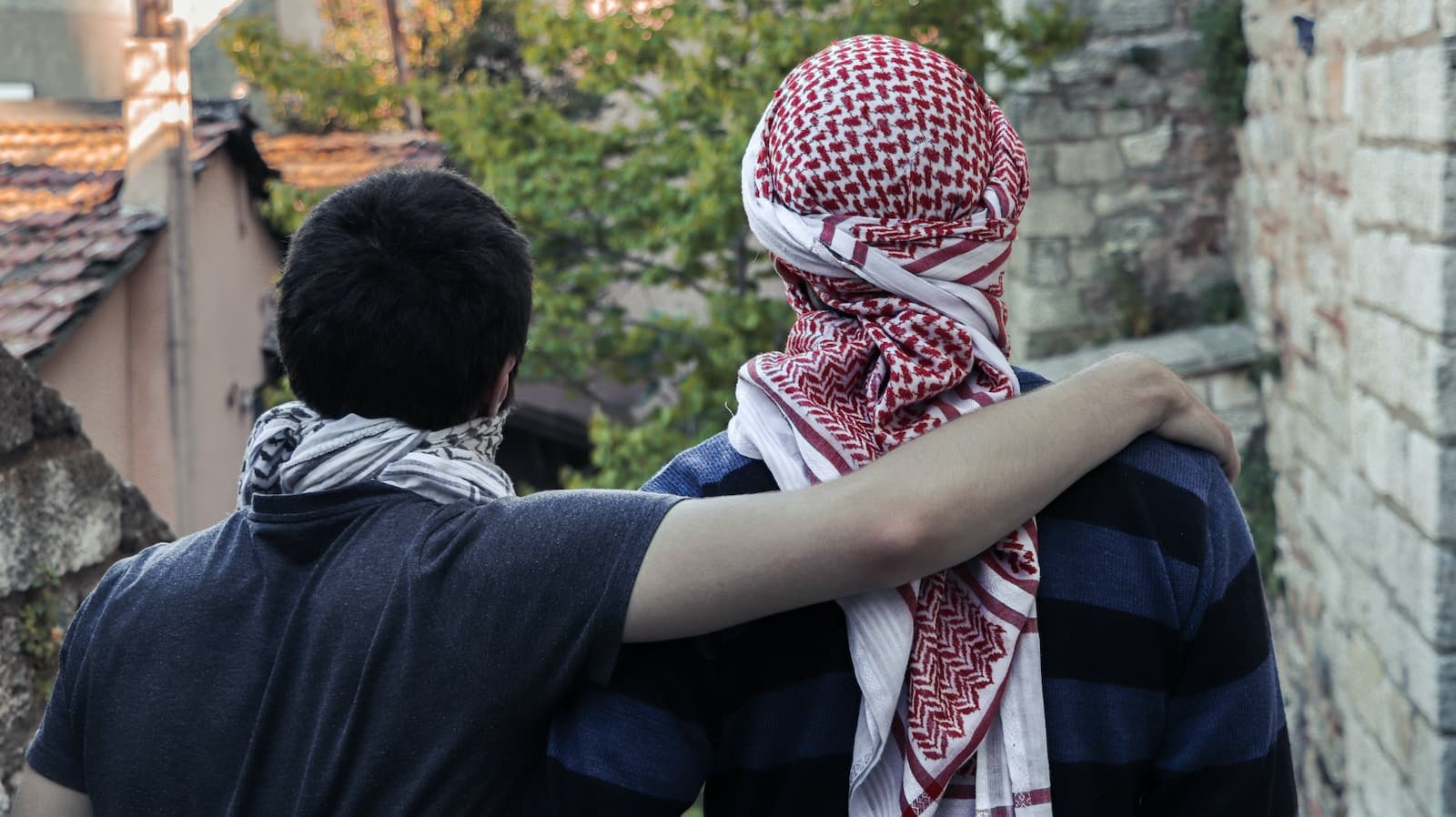There have been significant developments in the Muslim Brotherhood’s case, which has revealed the organisation’s tendency to officially split into two fronts, and each front has an official website and media platforms. The first is the Mahmoud Hussein Front, with the leaders of the General Shura Council, based in Istanbul, Turkey, and the second is the Ibrahim Munir Front, with members of the international organisation, based in the British capital, London.
Is the Brotherhood officially splitting?
The Istanbul Front announced a few days ago that the Brotherhood is represented by the General Shura Council, which takes complementary measures to the decisions regarding the position of the deputy guide and the person in charge of his work, stressing that it is not concerned by any decision or procedure to the contrary, and the Munir Front has taken violent decisions to dismiss, freeze, marginalize, isolate and remove the powers and responsibilities of the (51) leaders loyal to the Hussein Front and those responsible for the Muslim Brotherhood’s elements, businesses and investments in Turkey, as reported by Al Arabiya channel.
The Istanbul Front announces that the Brotherhood is represented by the General Shura Council, which is taking the necessary steps to complete the decisions regarding the vacancy of the post of deputy leader and his representative
Munir’s decisions included the marginalisation, dismissal and freezing of (15) Muslim Brotherhood leaders from the “Shirin Evler” division in Turkey, the marginalisation of (8) Egyptian Muslim Brotherhood leaders responsible for the “Bashak Shahir” division the exclusion of (12) officials of the General Shura Council group, and the suspension of the financial privileges for (9) brothers of the “Beylikdüzü” division, whose rents and study fees they were spending, and warnings were given to (8) Brotherhood Leaders of the “Bağcılar” division.
The Munir Front takes violent decisions to dismiss, freeze, marginalize, isolate and remove the powers and responsibilities of (51) leaders loyal to the Hussein Front
This, and after the Istanbul group led by Mahmoud Hussein took control of the group’s official website “Brothers Online” and media and electronic platforms, the Munir Front launched alternative website platforms, some of which bear the same name. Munir Front has taken control of the “Brothers Online” website, declaring it to be the official and only website of the group, and has encouraged some of its loyal leaders to fund alternative media platforms, in the name of the platforms affiliated with the Mahmoud Hussein Front itself, such as the “Verify Egypt” platform of the Istanbul-based Front and broadcast from the Netherlands, where the leader, Muhammad al-Aqeed, who released a video a few days ago, denounced the practices of the Hussein group, and revealed the group’s investments in Somalia and Africa, and the betrayals of the leaders to fund this alternative platform of the same name.
In this context, Adham Hassanein, the Muslim Brotherhood leader loyal to the Istanbul Front and editor-in-chief of the “Verify Egypt” platform, released a video threatening the leader, Muhammad al-Aqeed, accusing him of defrauding elements of the group. and others in Turkey and the Gulf countries in retaliation for his intention to launch an alternative platform .
The Munir Front is launching alternative media platforms and websites, some bearing the names of those controlled by Mahmoud Hussein himself
In addition to his attempt to impose his control over the reins of the group, Ibrahim Munir decided to assign Dr. Abdel Moneim Al-Barbari to head a group of Muslim Brotherhood members affiliated with the London Front, which would collect data and information on elements and leaders. loyal to the Istanbul Front and hand it over personally to Ibrahim Munir, so that he would take the necessary measures against it .
What is the origin of the Muslim Brotherhood?
The Muslim Brotherhood was born in 1928 in Egypt, in Ismailia, north-east of Cairo, on the banks of the Suez Canal. Founded by Sheikh Hassan Al-Banna, the Sunni and reformist organisation set itself two precise objectives: to liberate the country from the British yoke, and to take power in an Egypt that was once again imbued with Islamic values.
The Brotherhood forged its popularity by organising charitable and social activities, intended to appeal to the working and middle classes. This programme gives pride of place to religion, thanks to a popular education movement, designed to ensure the regeneration of Islam. A key investment in the eyes of Hassan Al-Banna, a teacher by training.
The Muslim Brotherhood in Europe
In Europe since the beginning of the 1950s, they started to form in an organised way in some Western countries, such as Great Britain, at the beginning of 1963. The injustice of some regimes, especially at the time of the Muslim The fate of the Brotherhood with the former Egyptian president Gamal Abdel Nasser in Egypt. And this movement moved to Europe with these people, and it was formed and loaded with all the characteristics that it had in the Islamic East, and it grew with the same intellectual, militant, kinetic, organisational components, etc. The group has great organisational strength and amazing financial capabilities that have allowed it to build a vast network of social and religious services in Europe in ten years.
The decision of Egyptian President Gamal Abdel Nasser to disband the group was supposed to lead to its fragmentation and final elimination, but the symbols of the movement have been remarkably successful in reorganising and reforming the movement along two main axes, namely the Saudi and the European axis, and have been able to form an influential political force on both sides.
The Islamic presence in Europe at the time of the decision to disband the group in 1954 was not characterised by momentum or communication, as Muslims in Germany, for example, had only two mosques separated by great distances, one in Hamburg and the other in Berlin. With the decline of the imperialist wave at the beginning of the second half of the 20th century and the liberation of most Islamic countries from the clutches of Western colonialism, the West resorted to employing Arabs and Muslims in a new way, in keeping with the nature of the scene, by activating them in its global war against communism of the time, which allowed waves of Arab and Islamic immigration, successively, to the Western shores everywhere.
At that time, Gerhard von Mende, who had spent the years of the Second World War as Minister of the Occupied Eastern Provinces under the Reich, then turned to intelligence, recruited Muslims who were fighting in the ranks of the Red Army and fell prisoner in Nazi camps, sometimes threatening them with death and promising to liberate their countries, which were sometimes falling under Soviet domination. In order to get closer to these new clients, Menda built a mosque in the city of Munich and established a legal association composed of members of the city’s Islamic community to carry out this task.
Predictions of the formation of a unified and organised Islamic current in Europe by overcoming ethnic and ideological differences between its elements began at the London Conference in 1973, a few months before the opening of the Munich mosque, where a number of activists organised a major meeting in the London suburban theatre that included a number of Islamic icons at the time, such as Ghaleb Hemmat, who had been appointed head of the Muslim Community of Southern Germany (the new official name of the Munich Mosque), and Khurshid Ahmed, one of the icons of the Islamic Group in Pakistan, the South Asian branch of the Muslim Brotherhood, and others.
Although the meeting did not produce direct results, it was the first step towards bringing the Islamists together. Four years later, another crucial meeting in the history of the Brotherhood took place in 1977 in the Swiss resort of Lugano.
The meeting was marked by the presence of a number of prominent Muslim Brotherhood figures and Islamic activists, such as Ghaleb Hemmat and Youssef Nada, one of the symbols of the Munich Mosque, Sheikh Yusuf Al-Qaradawi, whom the researcher Ian Johnson describes as the spiritual father of the group, and Ismail Al-Farouqi, the theorist and great Islamic thinker and others. This meeting was the first cornerstone in rebuilding the Brotherhood’s edifice that had been destroyed under the weight of the shovels of Nasserist tyranny and oppression.
In the early 1990s of the last century, a number of Islamic organisations and bodies were formed on the European continent, such as the Brussels-based Federation of Islamic Organisations in Europe, which aims to unite and coordinate Muslim Brotherhood groups in more than twenty countries, the Dublin-based European Council for Fatwas and Research, which is responsible for issuing fatwas on issues related to Muslim minorities in Europe, and the European Institute for the Humanities, which undertakes the task of training imams at three universities in France and Wales, as well as a group of economic entities that rely on the provision of funds from the Gulf to Brotherhood-affiliated organisations and movements in order to expand mosque-building operations throughout Europe.
The only difference between the Muslim Brotherhood in the Arab world and the West is that the Muslim Brotherhood organisation in the West functions as a group that represents a religious minority, and therefore its objective is not directed towards the Islamisation of society.
The Muslim Brotherhood possesses political realism and rationality, which allows them to understand the nature of the society in which they operate and the nature of the task at hand. Perhaps the group’s peaceful behaviour and focus on the social, cultural, educational, sporting, and religious problems of Muslim communities in the West has helped governments to see the Muslim Brotherhood as a moderate alternative to other Salafi-jihadist currents…
Original article in french here (translation not verified)
Photo by Markus Winkler on Unsplash














 English
English French
French Spanish
Spanish German
German Dutch
Dutch Italian
Italian Danish
Danish Portuguese
Portuguese Greek
Greek Russian
Russian Swedish
Swedish Bulgarian
Bulgarian Hungarian
Hungarian Catalan
Catalan Ukrainian
Ukrainian Polish
Polish Basque
Basque Chinese (Simplified)
Chinese (Simplified) Japanese
Japanese Hebrew
Hebrew Arabic
Arabic Swahili
Swahili Amharic
Amharic Irish
Irish Afrikaans
Afrikaans Albanian
Albanian Armenian
Armenian Azerbaijani
Azerbaijani Belarusian
Belarusian Bengali
Bengali Bosnian
Bosnian Cebuano
Cebuano Chichewa
Chichewa Chinese (Traditional)
Chinese (Traditional) Corsican
Corsican Croatian
Croatian Czech
Czech Esperanto
Esperanto Estonian
Estonian Filipino
Filipino Finnish
Finnish Frisian
Frisian Galician
Galician Georgian
Georgian Gujarati
Gujarati Haitian Creole
Haitian Creole Hausa
Hausa Hawaiian
Hawaiian Hindi
Hindi Hmong
Hmong Icelandic
Icelandic Igbo
Igbo Indonesian
Indonesian Javanese
Javanese Kannada
Kannada Kazakh
Kazakh Khmer
Khmer Korean
Korean Kurdish (Kurmanji)
Kurdish (Kurmanji) Kyrgyz
Kyrgyz Lao
Lao Latin
Latin Latvian
Latvian Lithuanian
Lithuanian Luxembourgish
Luxembourgish Macedonian
Macedonian Malagasy
Malagasy Malay
Malay Malayalam
Malayalam Maltese
Maltese Maori
Maori Marathi
Marathi Mongolian
Mongolian Myanmar (Burmese)
Myanmar (Burmese) Nepali
Nepali Norwegian
Norwegian Pashto
Pashto Persian
Persian Punjabi
Punjabi Romanian
Romanian Samoan
Samoan Scottish Gaelic
Scottish Gaelic Serbian
Serbian Sesotho
Sesotho Shona
Shona Sindhi
Sindhi Sinhala
Sinhala Slovak
Slovak Slovenian
Slovenian Somali
Somali Sundanese
Sundanese Tajik
Tajik Tamil
Tamil Telugu
Telugu Thai
Thai Turkish
Turkish Urdu
Urdu Uzbek
Uzbek Vietnamese
Vietnamese Welsh
Welsh Xhosa
Xhosa Yiddish
Yiddish Yoruba
Yoruba Zulu
Zulu